After the holidays pass I always begin to look south to those islands in the Caribbean that I know so well and dearly love, and to the Keys where I'll be meeting my friend Dave in a couple months for some fishing and the mandatory Duvall Street Crawl.
Dave suggested I bring a guitar along this time and if that Takamine I have for sale right now doesn't sell by then, it will most likely make the trip. Sitting on the porch of a little motel, watching the sunset over the Gulf, strumming out a few Buffet tunes and certainly some nice bossa nova with a cold adult beverage close at hand..... ah..... heaven!
The only problem is - it means that yet again I'll have to hassle with the uncertainty of traveling with a guitar. This is a subject of ongoing discussion on many of the guitar forums and there is almost always a feature in at least one of the guitar magazines at this time of the year on the subject. If I had deep pockets and was traveling with a prized, valuable instrument I might even consider doing what some pros do, which is actually buying a seat for the guitar. Alas, that ain't me, so I'm confronted with the dilemma: how to get my guitar from A to B via an airline, without hassling with surly flight attendants, cranky ticket counter guys, and other passengers who glare when I take up half an overhead bin with my guitar.
I could always give it over to the baggage loaders of course. But that is a last resort, and here's why:
United Breaks Guitars
This You Tube video has been viewed over NINE MILLION TIMES. I guess that tells us something about the hazards of handing our instruments over to the retired UFC guys in baggage. Fortunately, guitar makers are aware of the problem and in the last few years quite a few "travel" guitars have hit the market. I've owned Martin's version, the LXM and it sounds surprisingly good for a guitar that is small and is made from something called HPL, which is super durable and impervious to most normal travel hazards. It comes with a very nice padded case with shoulder straps and the whole things fits in the overhead just fine. Don't confuse the Martin Backpacker with the LXM - the Backpacker is a very narrow guitar, made entirely of wood and I just don't think it would survive the rigors of air travel.
Taylor makes a similar instrument called the Baby Taylor and although I don't think it sounds quite as good as the Martin it is another way to go if you're more of a Taylor person than a Martin person. Washburn has one too and one of my students has a very cool all-graphite travel guitar made by a company called Blackbird (you can find them on You Tube too) and it sounds quite good, if a little on the artificial side, for lack of better description. It is also rather pricey, costing almost three times as much as the previously mentioned guitars. In any case, if you can afford it a travel guitar is well worth looking into. There are no doubt quite a few other brands out there that I'm not familiar with but whichever one you choose, base your decision on both size and durability. And sound, of course, keeping in mind that no travel guitar will sound as good as an all-wood, standard size instrument.
So what happens when you get to the airport? Well, assuming you've decided to go for it and are going to try to get your guitar on the plane with you, you'll need to be both cagey and bold. If you don't have any luggage to check you can proceed through security if you've printed out your boarding pass in advance. If you do have to approach the counter to check your luggage, try to keep your guitar in front of you on the floor as you stand up tight to the counter. Smile, be cool, act like you've done it million times - don't even mention the guitar unless asked. If the counter person wants you to check it, explain nicely that you intend to do a hand check at the gate. The law requires they allow you to do this. Of course, that is not really your plan but they don't know that.
Next you'll have to go through the dreaded security check and x-ray process. I highly advise NOT keeping things like an electronic tuner and spare sets of strings in the case. These may get unwanted attention from the person watching the video screen. Probably the worst that will happen is that you'll have to open the case and let them examine the tuner and strings but that should only be a minor inconvenience. But (drawing from my shore fishing experience now) the cardinal rule is: never, ever draw attention to yourself!
Then it's time to approach the gate and get ready to board and this is the trickiest part. There are two schools of thought here. One says that if you board as early and quickly as you can, you may encounter the person scanning your boarding pass and/or the flight attendants before they are stressed out with trying to get the herd of cattle into the pen with a plane behind its take-off time. If you really luck out, and you smile and ask really, really nicely a flight attendant may agree to let you put your guitar in the small coat closet where the crew stashes their stuff. This is not likely however, as modern jets have much smaller closets than ones in the past and the closet may well be already filled. But again, it's worth a try - assuming you get that far.
But suppose the person scanning the passes says: You need to check that - hand it over and someone will bring it down to the plane and it will be loaded. This is a worst case scenario (see United Breaks Guitars above!) because if you've followed my advice so far you have a guitar that is only protected by a padded gig bag. Scary indeed. So if this happens to me - and it has - the next strategy is to 1.) stay cool, and 2.) grovel. And here is where the idea of not being first but being close to last may pay off.
If you've waited to present your pass until just a few people are left, the ticket people and the flight attendants have only one thing one their minds: get that plane loaded and outa here. So they are unlikely to spend much time listening to your pleas. And here is where the whole thing comes down to nothing more than the mood and attitude of the ticket lady and the flight attendants. Without delving too far into the mind set of those folks I can tell you that I've stayed in hotels where flight crews stay over and overhearing the conversations at breakfast you would think they worked somewhere that should be profiled on that World's Dirtiest Jobs TV show! Most people bitch about their jobs from time to time but from what I've seen, flight attendants take it to a new level. So again: be as nice as you can be, be calm, state your case ("It's a new guitar for my sister and I would hate for it to get broken!" "I make my living playing and it would be just awful if anything happened...please, please, PLEASE, let me bring it on board!") and hope for the best.
Of course if all this works and you make it through the gauntlet of airline employees and security, you have one more obstacle to overcome: the disgust and possibly outright anger of other passengers who only see your guitar as something taking up THEIR precious overhead space. Time to employ the "Boston MTA Stare" - gaze only at some undefined point in the distance and never make eye contact. Good luck on that one.
So there you have it. And just think - you'll have to go through the whole thing again when you're ready to head home!
Still, for me anyway it's worth it. Just be prepared for any eventuality and the reality that you may have to hand over your guitar and you'll most likely do just fine.
Peace & good music,
Gene
!
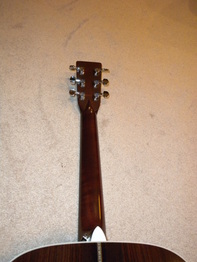
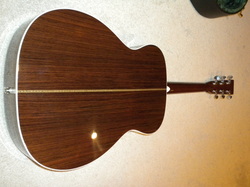
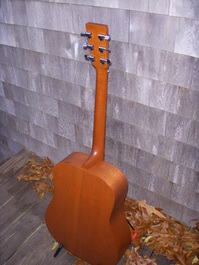
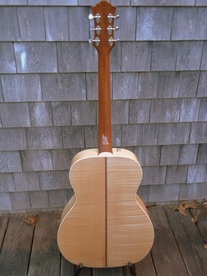
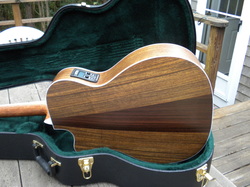
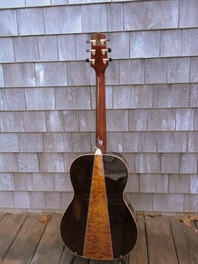
 RSS Feed
RSS Feed